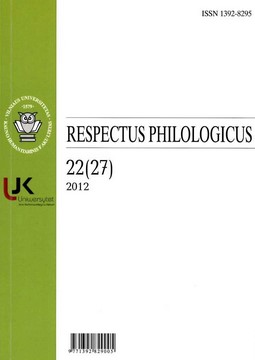ON “POLITENESS” AND “POLITE LIES” IN EVERYDAY DISCOURSE
ON “POLITENESS” AND “POLITE LIES” IN EVERYDAY DISCOURSE
Author(s): Jacek SzajewskiSubject(s): Sociolinguistics, Behaviorism
Published by: Vilniaus Universiteto Leidykla
Keywords: politeness; face; polite lies; discourse analysis;
Summary/Abstract: This article primarily contains a threefold presentation of the notion of politeness. The universality of the phenomenon of politeness and its wide recognisability inspired the choice of methodology adopted herein. The article aims to produce some observations with regard to both similarities and possible divergences amongst the following angles of the concept in question: a) dictionary definitions, b) definitions proposed by linguists, and c) the perception of this concept by members of society. The paper further aims to shape an initial vision of the category of “politeness” in order to classify it and specify its means of verbalization, with a special focus on the territory of polite lies. The article begins by presenting the dictionary definitions of the concept in question and attempts to show the complexity of the phenomenon, which directly results from the definitions under scrutiny. These are then contrasted with some common definitions proposed by linguists; the key concepts, the operationalization of politeness, and the author’s comments can be found in this section. Subsequently, these definitions are contrasted with the ways lay members of society perceive the concept of politeness. Afterwards, the paper briefly outlines the two fundamental theories of linguistic politeness, namely Brown and Levinson’s Theory of Politeness and Leechs’s Politeness Principle. This is done especially with a view to settling the notion of the polite lie within the frames of the aforementioned theories. Consequently, the phenomenon of the polite lie is defined and the ways in which it typically operates are shown. This is done by means of Brown and Levinson’s positive politeness theory and Leech’s maxims of politeness. Ultimately, the article attempts to contrast language users’ perceptions of polite lies with the two theories of politeness.
Journal: Respectus Philologicus
- Issue Year: 2012
- Issue No: 22(27)
- Page Range: 205-218
- Page Count: 14
- Language: English

